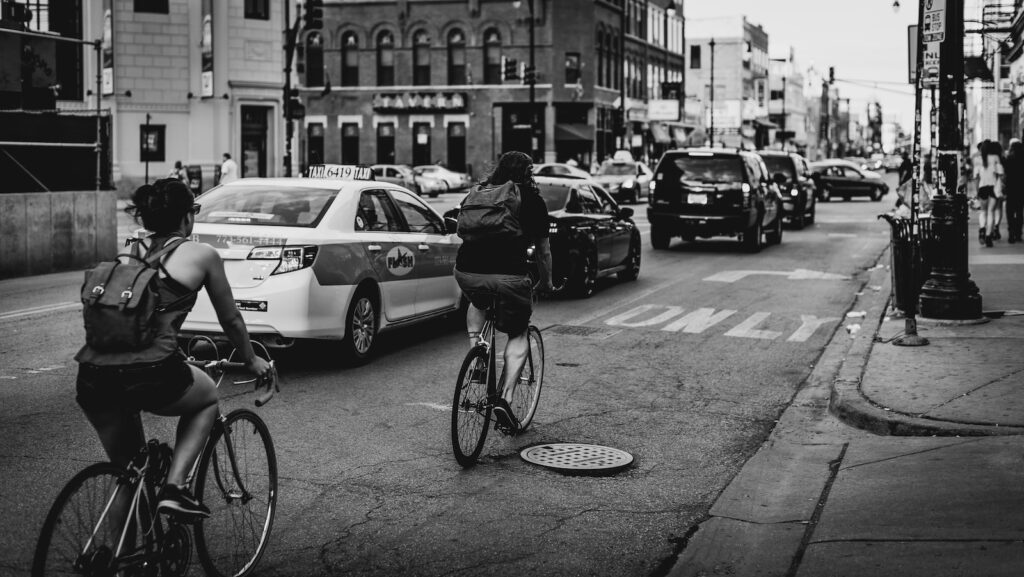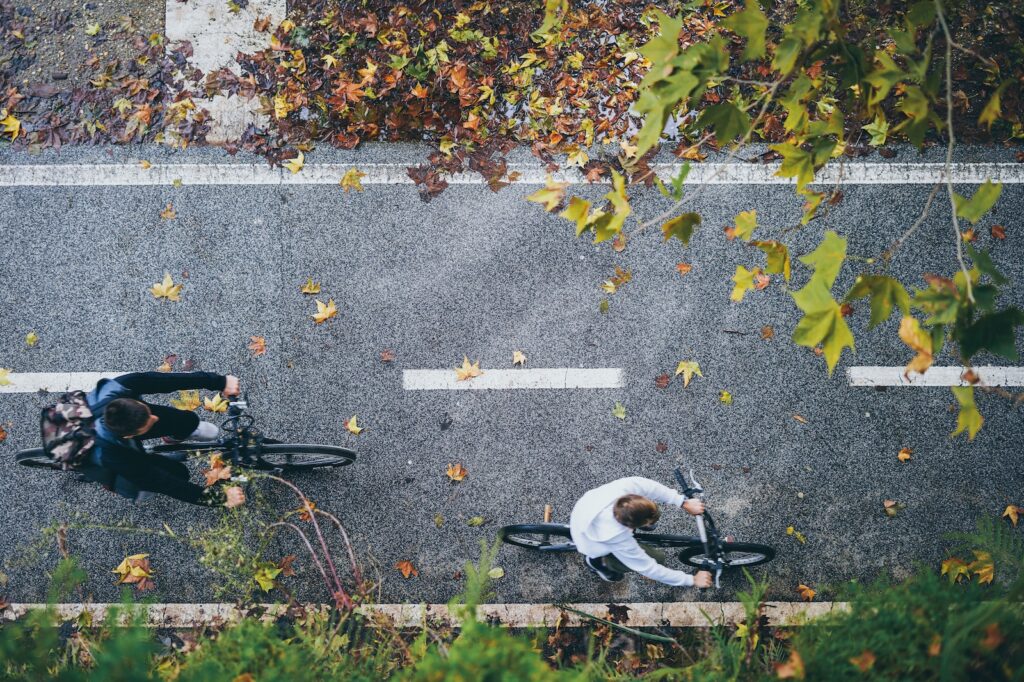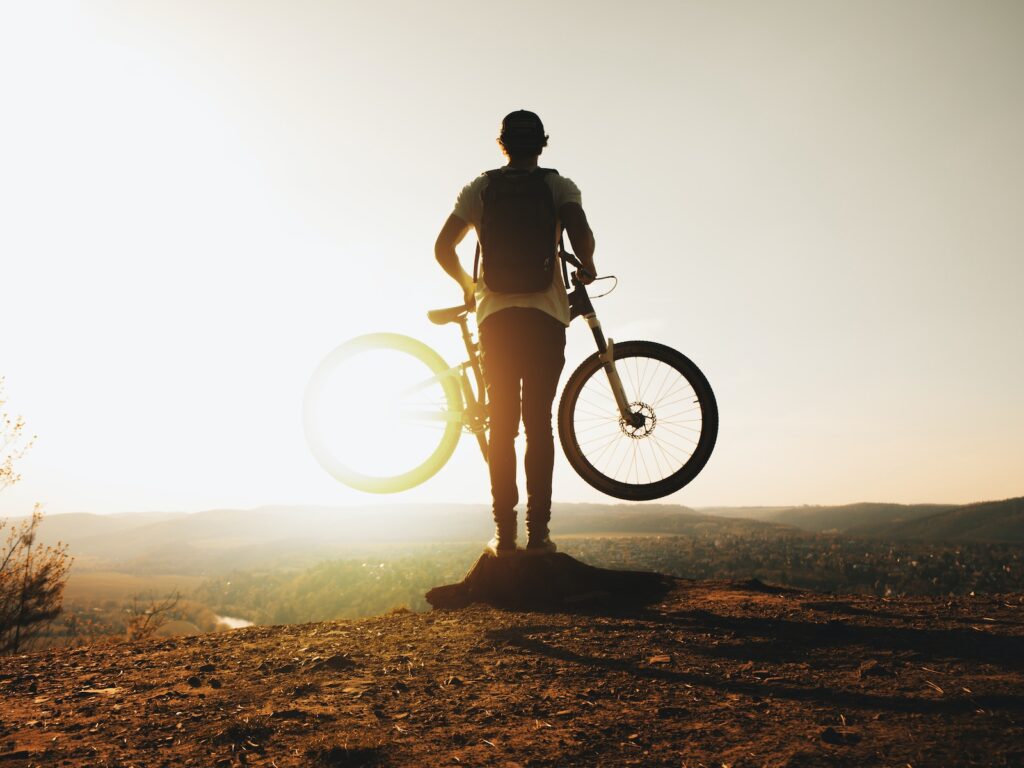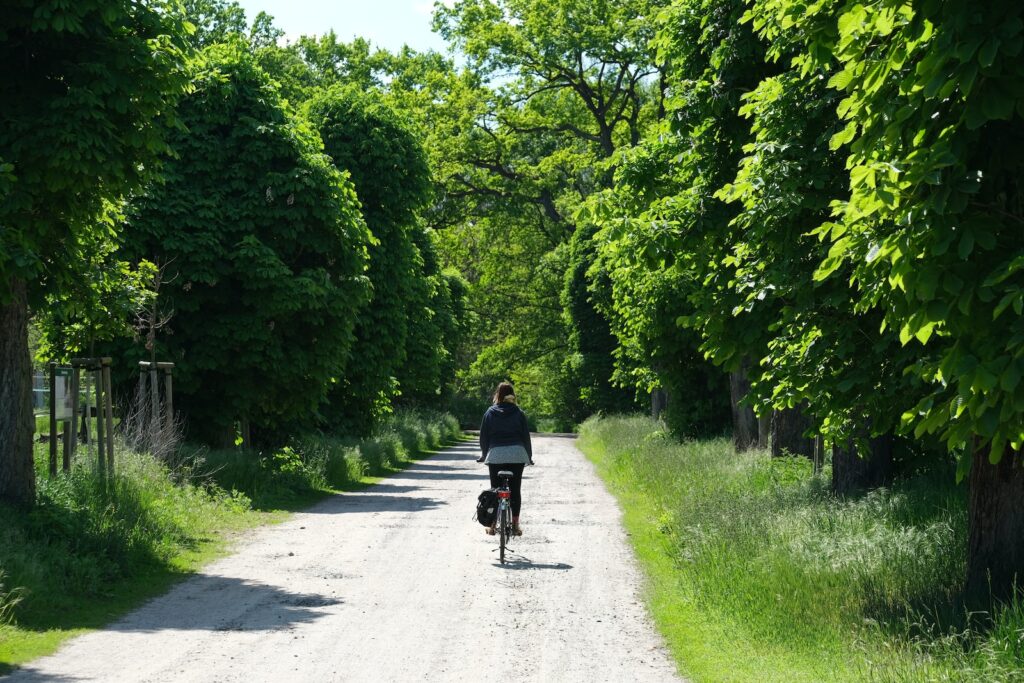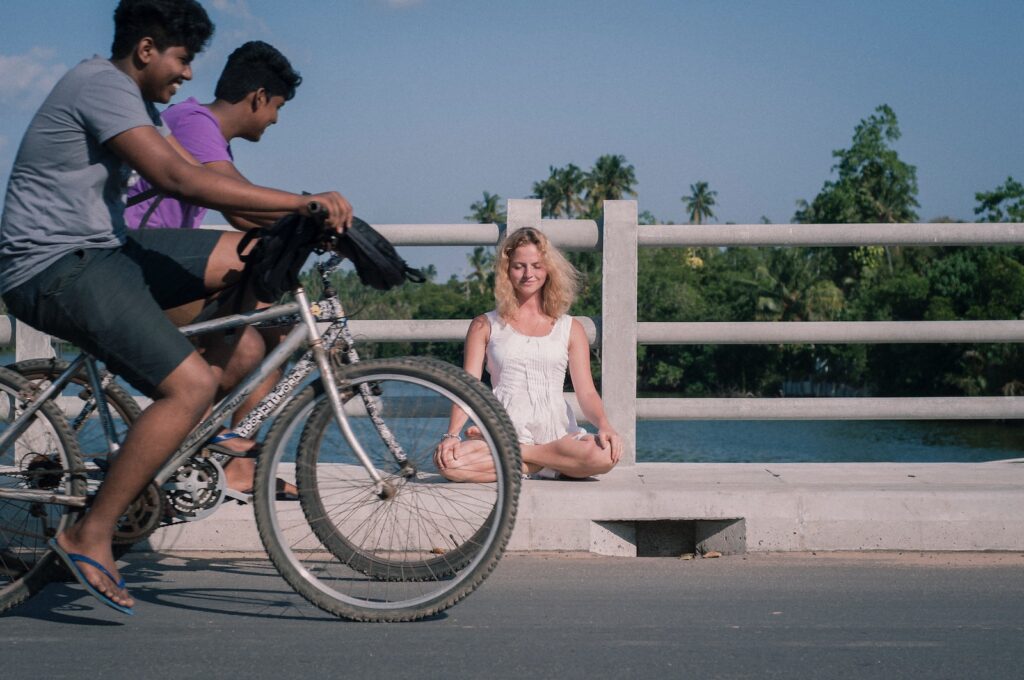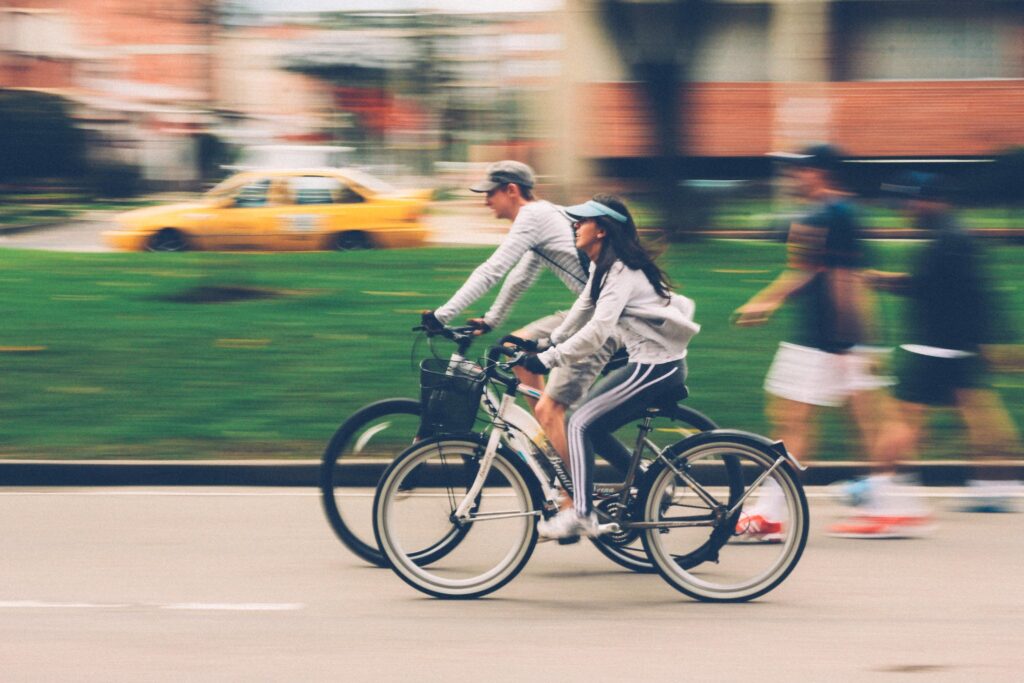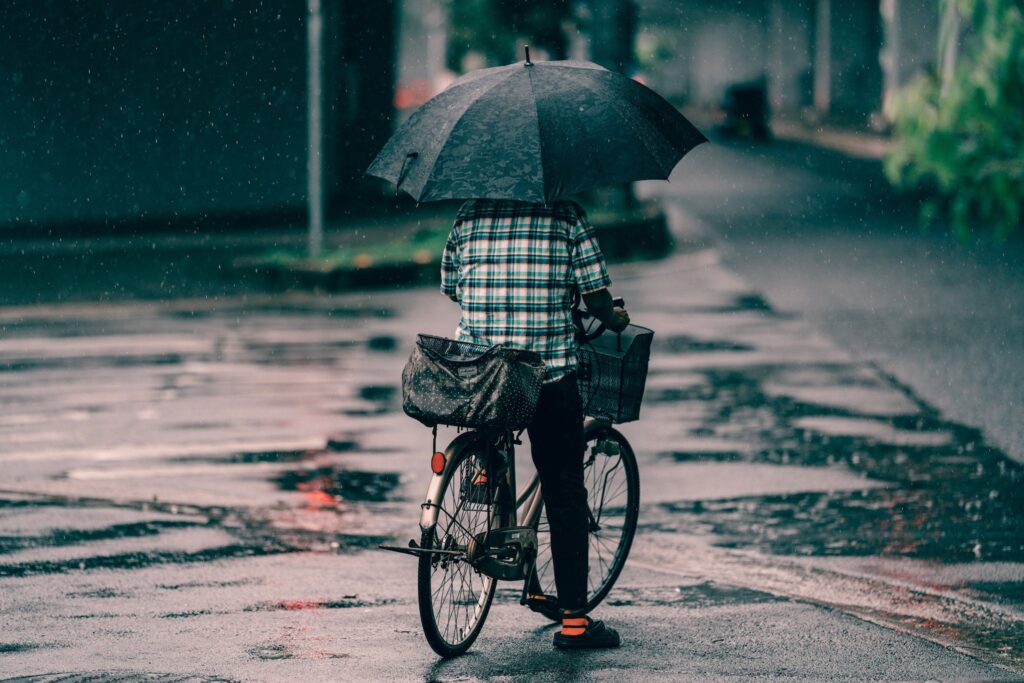Cycling in busy traffic can feel like a challenge, especially if you’re new to it. But here’s the good news: with some know-how and a bit of preparation, you can confidently share the road with cars and trucks.
As a trauma surgeon, I’ve been fortunate to avoid accidents while biking, but I see the aftermath of them nearly every day in my line of work. It’s a reminder that in traffic, us cyclists are often the most vulnerable. But don’t let that deter you. By understanding road rules and adopting safe cycling habits, you can ride with confidence, whether you’re heading to work or just out for some fresh air.
Table of Contents
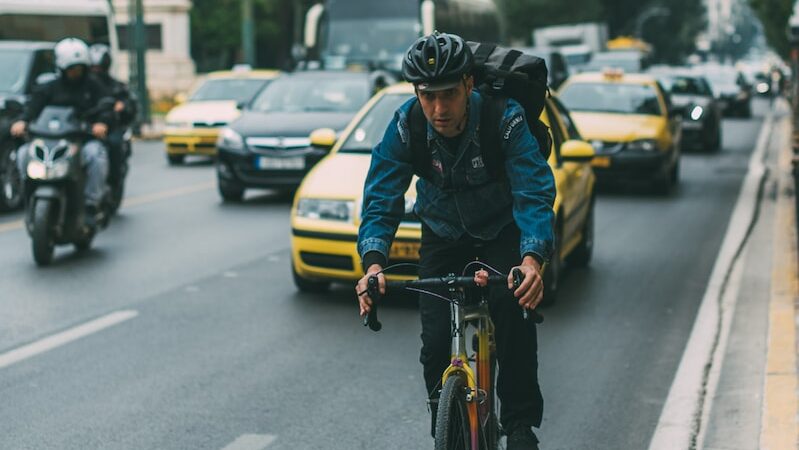
Summary
One of the most important things to keep in mind when cycling in traffic is to ride defensively. Cyclists should always assume that other drivers cannot see them and should avoid distractions such as music or electronic devices that can take their focus off the road. Bicyclists should also ride with traffic, use bike lanes when available, and avoid riding on sidewalks whenever possible. Pedestrians should also follow the rules of the road to ensure their safety while walking near traffic.
Understanding the Basics of How to Ride Bike in Traffic
Bicycle Vs Vehicles
When riding a bicycle in traffic, it is important to understand that bicycles are considered vehicles under the law. This means that they are subject to the same rules and regulations as motor vehicles. Bicyclists should ride in the same direction as traffic and obey all traffic signs and signals. They should also ride in a straight line and avoid weaving in and out of traffic.
Rules of the Road
Knowing the rules of the road is essential for safe cycling. Bicyclists should keep at least 4 feet between themselves and vehicles and avoid hugging the curb too closely. They should also maintain a comfortable distance from the pavement edge, ride in single file, and yield to traffic in busier lanes. It is required by law in most states to ride in single file, although some states allow cyclists to travel 2 abreast. This should only be done on less-traveled roads that are free of traffic.
Rights and Responsibilities
Bicyclists have the same rights and responsibilities as drivers when sharing the road with motor vehicles. This means that they have the right to use the road and must follow the same traffic laws as other drivers. Bicyclists should also be aware of their surroundings and use hand signals to communicate with other drivers. They should also wear helmets and other safety gear to protect themselves in case of an accident.
Safety Precautions
When it comes to riding a bike in traffic, safety should be the top priority. There are several precautions that cyclists can take to reduce the risk of accidents and injuries. In this section, we will discuss some of the most important safety precautions for riding your bike in traffic.
Wear a Helmet
Wearing a helmet is one of the most important safety precautions for cyclists. A helmet can help protect your head in the event of an accident. It is important to choose a helmet that fits well and is comfortable to wear. The helmet should be worn level on the head and should cover the forehead. Make sure the chin strap is snug but not too tight. A recent studie has shown the immense benefits of wearing a helmet. Helmets reduce head injuries by 48%, serious head injuries by 60%, and traumatic brain injuries by 53%. They also reduce face injuries by 23% and decrease the total number of cyclists who are killed or seriously injured by 34%.
Interestingly, helmets do not have a significant effect on cervical spine injuries. The effectiveness of helmets is consistent regardless of age, indicating that both adults and children benefit equally from their use. Helmets are particularly effective in single bicycle crashes, which can often occur in challenging conditions like slippery or icy roads. Considering these findings, it’s clear that wearing a helmet is crucial for safety, especially in situations prone to accidents.
Visibility and Lighting
Being visible to drivers is crucial when riding a bike in traffic. Cyclists should wear bright colors or reflective clothing to increase their visibility. In addition, bikes should be equipped with reflectors on the rear, front, pedals, and spokes. A bright headlight and a rear-view mirror are also recommended. Bike lights should be used at night or in low-light conditions.
Hand Signals
Hand signals are an important way for cyclists to communicate with drivers. Cyclists should use hand signals to indicate when they are turning or stopping. To signal a left turn, the cyclist should extend their left arm straight out. To signal a right turn, the cyclist should extend their right arm straight out or use their left arm to point to the right. To signal a stop, the cyclist should extend their left arm downward with the palm facing back.
Avoiding the Door Zone
The door zone is the area next to parked cars where a car door can swing open unexpectedly. Cyclists should avoid riding in the door zone to reduce the risk of being hit by a car door. Cyclists should ride at least four feet away from parked cars and should be prepared to brake or swerve if a car door opens suddenly.
Riding Techniques
When riding a bike in traffic, it is important to use proper riding techniques to ensure safety and avoid accidents. This section will cover some key techniques that cyclists should keep in mind when sharing the road with vehicles.
Riding in Traffic
When riding in traffic, start with good road positioning. It is important to stay aware of your surroundings and be visible to drivers. Cyclists should always ride in the same direction as traffic and stay in a traffic lane, rather than on the sidewalk or in a bike lane. Riding in a traffic lane allows cyclists to be more visible to drivers and helps them to maintain a consistent flow of traffic.
Passing and Yielding
When passing other vehicles or cyclists, cyclists should always pass on the left and give a clear signal before moving into the next lane. If a cyclist needs to yield to a vehicle, they should move to the right side of the lane and signal to the driver that they are yielding.
Navigating Intersections
Intersections can be particularly dangerous for cyclists, as drivers may not always see them or may not be aware of their presence. When approaching an intersection, cyclists should always search for any potential hazards, identify any potential conflicts, and decide on the safest course of action. Cyclists should also avoid weaving in and out of traffic and should always stay in a single file when riding through an intersection.
Avoiding Road Hazards
Road hazards such as potholes, debris, and uneven pavement can be dangerous for cyclists. When riding in traffic, cyclists should always be on the lookout for potential hazards and should be prepared to adjust their course if necessary. Cyclists should also be aware of the flow of traffic and should avoid making sudden or unexpected movements that could cause an accident.
By using these riding techniques, cyclists can share the road safely with vehicles and avoid accidents. However, it is important to remember that accidents can still happen, and cyclists should always wear proper safety gear and be prepared for any potential hazards on the road.
Dealing with Drivers
When riding your bike in traffic, it’s important to be aware of drivers and their behavior. Here are some tips for dealing with drivers:
Eye Contact
Making eye contact with drivers can help ensure that they see you and are aware of your presence. When approaching an intersection or crossing a street, try to make eye contact with drivers to ensure that they see you. This is especially important when a driver is turning or changing lanes.
Anticipating Driver Behavior
It’s important to anticipate driver behavior when riding in traffic. This means being aware of what drivers might do and taking steps to avoid potential accidents. For example, if you see a driver parked on the side of the road, be aware that they may open their door suddenly and give them plenty of space.
Sharing the Road
Knowing how to share the road with motorists is a crucial aspect for bike riders. When riding in traffic, it’s important to be predictable and follow the rules of the road. Use bike lanes when available and stay on the right side of the road. Be aware of driveways and intersections, and always signal your turns and lane changes.
These rules will help you ride safely in traffic. Remember to always be aware of your surroundings and anticipate potential hazards.
Legal Considerations
When riding a bike in traffic, it is important to be aware of the legal considerations. This will help ensure that you are riding safely and following the law. In this section, we will cover two important legal considerations: obeying traffic laws and cyclist’s rights.
Obeying Traffic Laws
Bicyclists are required to follow the same traffic laws as motorists. This includes stopping at stop signs and traffic lights, yielding to pedestrians, and riding in the same direction as traffic. Failure to follow these laws can result in a citation or even an accident.
It is important to note that some states have specific laws that apply to bicyclists. For example, some states require that bicyclists ride in a designated bike lane if one is available. Be sure to check your local laws to ensure that you are following all applicable regulations.
Cyclist’s Rights
Bicyclists have the same rights and responsibilities as motorists when riding on the road. This means that they have the right to ride on the road and use the full lane when necessary. Motorists need to be aware of these rights and give bicyclists enough space when passing.
The National Highway Traffic Safety Administration (NHTSA) recommends that motorists give bicyclists at least three feet of clearance when passing. Some states have specific laws that require motorists to give bicyclists a certain amount of space when passing.
In addition to these rights, bicyclists also have the right to file a claim if they are involved in an accident with a motorist. This can help cover the cost of medical bills and property damage.
By understanding and following these legal considerations, bicyclists can ride safely and confidently in traffic.
Conclusion
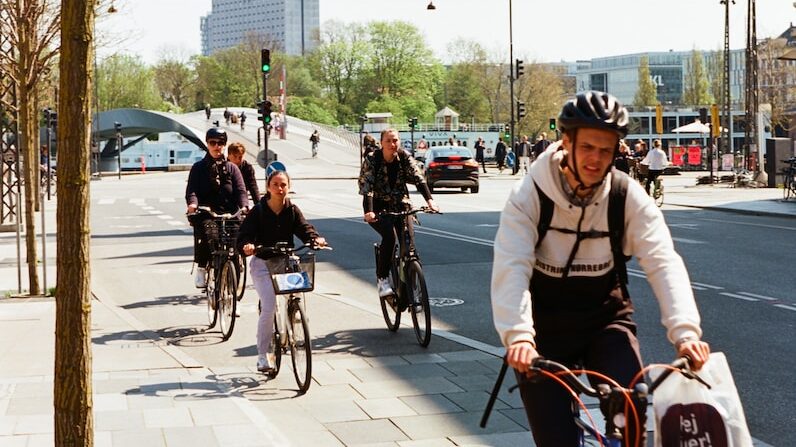
Riding a bike in traffic can be intimidating, but with the right knowledge and precautions, it can be a safe and enjoyable experience. By following the tips outlined in this article, cyclists can reduce their risk of accidents and improve their overall safety on the road.
Some of the most important takeaways include:
- Always wear a properly fitting helmet to protect your head in case of a fall or collision.
- Obey traffic laws and signals, including stopping at stop signs and red lights.
- Be predictable and visible by using hand signals, wearing bright or reflective clothing, and using lights when riding in low-light conditions.
- Ride defensively and be aware of your surroundings, including potential hazards like parked cars, pedestrians, and other vehicles.
- Avoid distractions like using your phone or listening to music while riding.
- Use bike lanes or ride on the right side of the road, following the flow of traffic.
By following these guidelines, cyclists can ride with confidence and share the road safely with other vehicles. Remember, road safety is everyone’s responsibility, and by working together, we can create a safer environment for everyone on the road.

